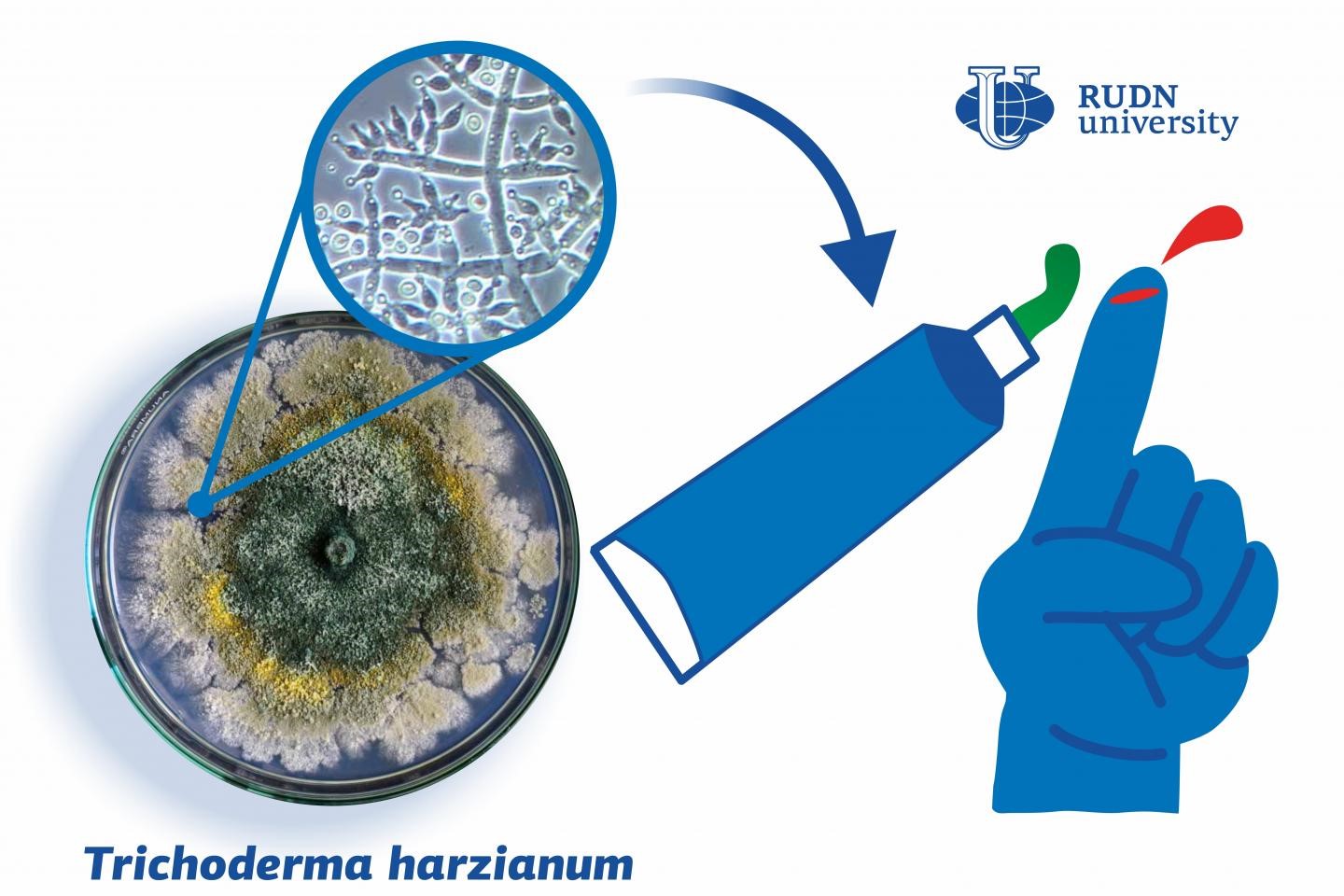RUDN University medics created a wound-healing gel with metabolic products of trichoderma

The best way to treat skin damage is to accelerate cell regeneration using ointments with different active ingredients such as metabolic products of microorganisms. Fungi, bacteria, and other organisms produce antibiotics, enzymes, growth promoters, vitamins, and amino acids, and scientists are always looking for ways to turn them into medicinal drugs. One of these useful substances is L-lysine-oxidase produced by Trichoderma fungi. A team of researchers from RUDN University developed a technology to incorporate this enzyme into a wound-healing gel. The method does not require expensive purification of the initial biological liquids and therefore is economically feasible.
“Modern-day microbiology is focused on physiologically active metabolic products of microorganisms. The fungi of the genus Trichoderma are well-studied, and the Trichoderma harzianum Rifai F-180 strain can produce large quantities of a protein called L-lysine-oxidase that has confirmed antiviral and anti-tumor properties. This opens a range of prospects for the development of new pharmaceutical forms that could be used to treat infections and skin damage,” said Prof. Irina Smirnova, a PhD. in Biology, from Berezov Department of Biochemistry at RUDN University.
Based on the results of earlier studies, the team chose the optimal active ingredient concentration of 1%. When selecting additional components for the gel, the scientists followed a set of rules. The base of the gel had to match the active ingredient, support the activity of L-lysine-oxidase, secure easy application and storage, and cause no irritation. Following these principles, the team chose and tested three base options: methylcellulose, carbopol, and mARS.
The experiment was conducted on nine adult guinea pigs divided into groups of three. The skin of the animals was mechanically damaged, and 18 hours after that the team started the treatment. Each animal was treated with one of the three types of gel for two weeks. The product based on methylcellulose demonstrated the worst results with wounds healing for 9 to 10 days on average. The best results were registered in the group that received the carbopol-based gel: the wounds of the animals healed after 6 to 7 days.
“Based on the results of the experiment, we can confirm that 1% carbopol-based gel with the culture liquid of Trichoderma has advanced wound-healing properties. The next stage for us will be a pre-clinical trial. The new pharmaceutical form could be used in veterinary medicine to treat wounds, viral skin infections, and ocular herpes. Moreover, it could find application in medical cosmetology, gynecology, and skin cancer therapy,” added Prof. Irina Smirnova from RUDN University.
The article was published in Systematic Reviews in Pharmacy.
Matilda Pavlovna Mityaeva was born in 1925. In November 1942, she volunteered for frontline duty. She participated in the Great Patriotic War from November 1942 to June 1945 as part of the 53rd Infantry Division of the 475th Infantry Regiment. She was wounded twice.
The team led by Sergey Zyryanov, Head of the Department of General and Clinical Pharmacology, became the winner of the All-Russian competition of scientific projects "Technologies for Human Health".
RUDN University constantly adapts to the changes of the modern world and responds to challenges flexibly. This allows us to keep the standard of a world-class research university. The sphere of science is no exception. Peter Dokukin, Head of the Research Division, presented the updated R&D Programme at the meeting of the RUDN University Academic Council.
Matilda Pavlovna Mityaeva was born in 1925. In November 1942, she volunteered for frontline duty. She participated in the Great Patriotic War from November 1942 to June 1945 as part of the 53rd Infantry Division of the 475th Infantry Regiment. She was wounded twice.
The team led by Sergey Zyryanov, Head of the Department of General and Clinical Pharmacology, became the winner of the All-Russian competition of scientific projects "Technologies for Human Health".
RUDN University constantly adapts to the changes of the modern world and responds to challenges flexibly. This allows us to keep the standard of a world-class research university. The sphere of science is no exception. Peter Dokukin, Head of the Research Division, presented the updated R&D Programme at the meeting of the RUDN University Academic Council.